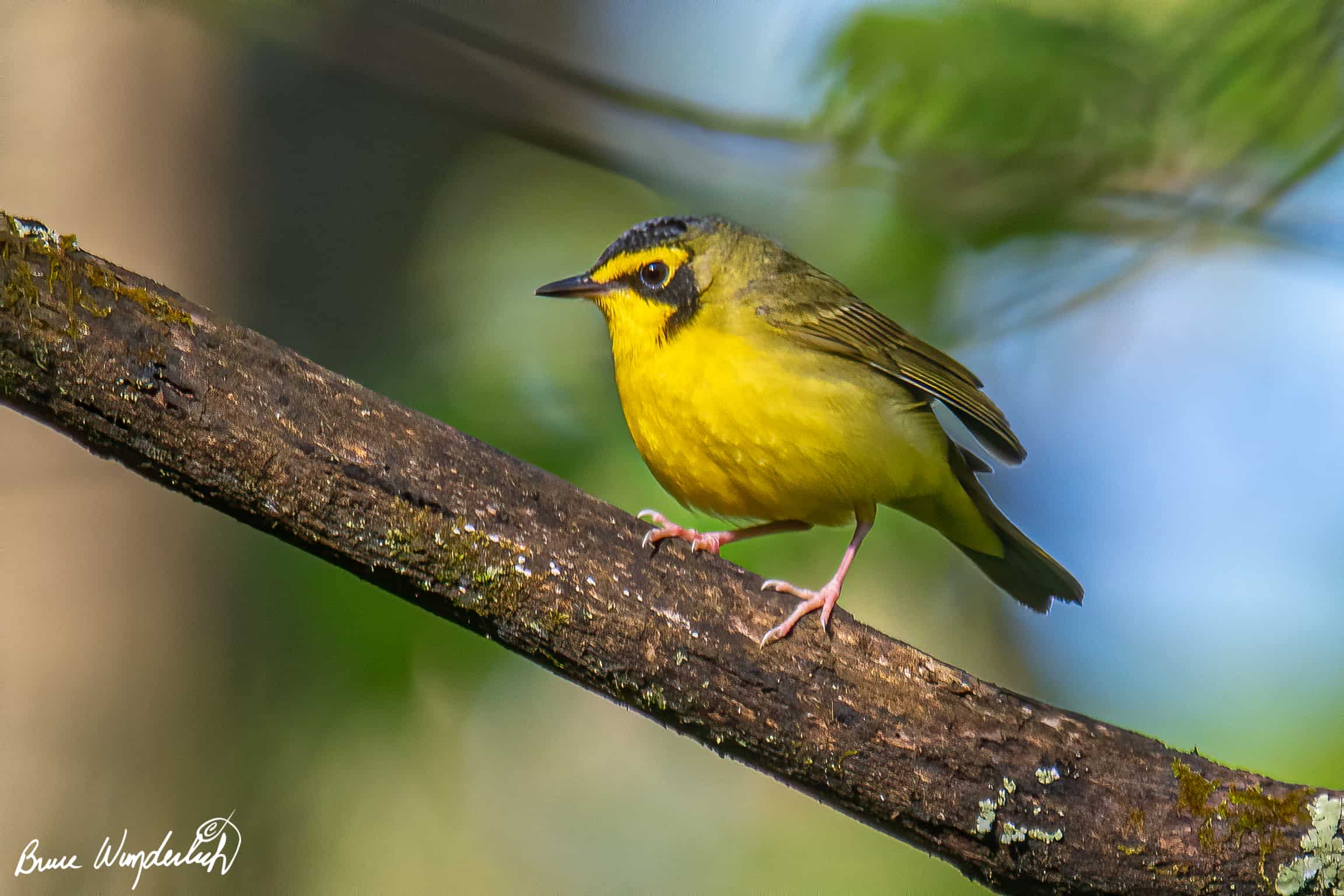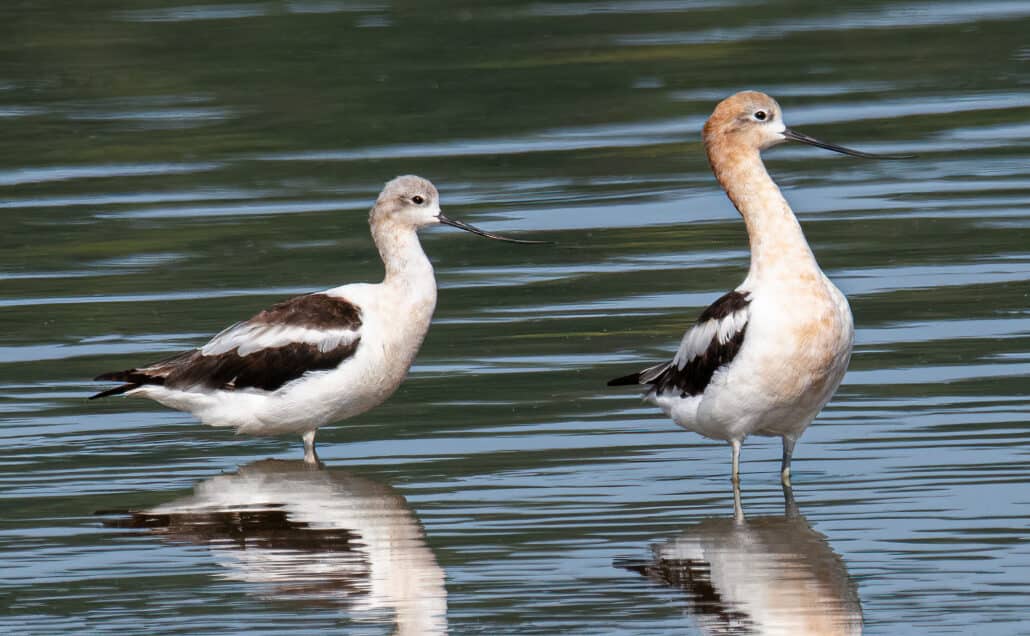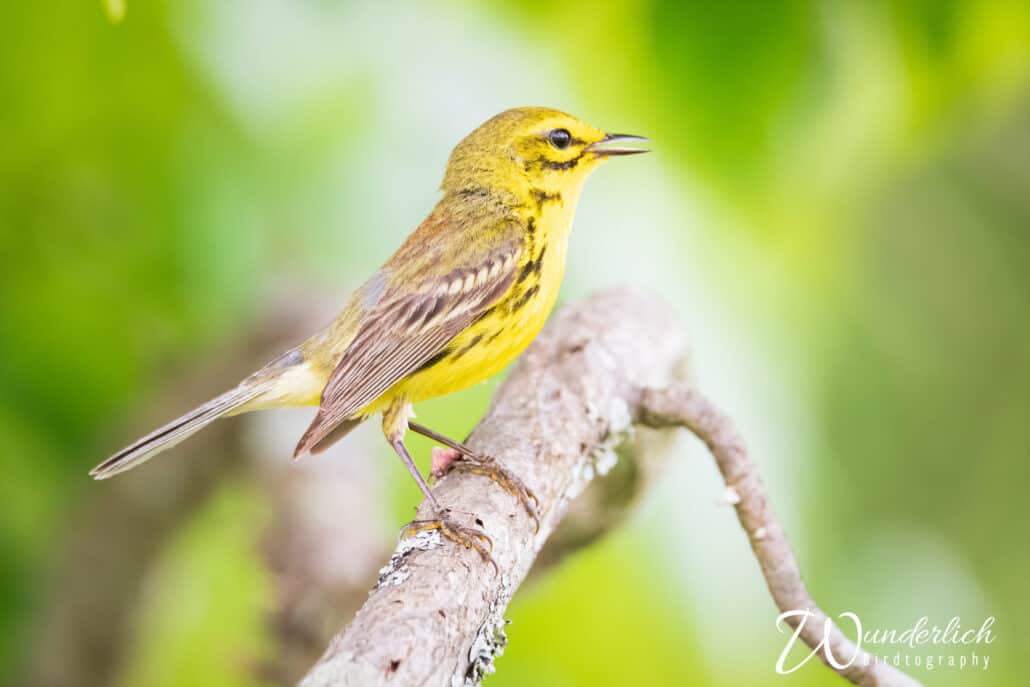
With all the birding festivals and hotspots closed this year while we are all sheltering in place, my chances of photographing a new warbler species this spring were slim.
Many months ago I had made plans to be at Magee Marsh, on the western shores of Lake Erie in northwestern Ohio, almost every weekend in May—as usual. Instead, I had to stay close to home and bird at my local parks, and safely keep social distance from others. On May 3, after an afternoon rainstorm, knowing that rain sometimes pushes the warblers into the lower branches to look for insects, I decided to check out a local birding hotspot, McDonough Wildlife Park in Vienna, West Virginia, a short drive from home. When I arrived, I was surprised to find a couple of my birding friends in the parking lot.
While maintaining a safe distance from each other, we joined forces to look for warblers. On this rainy day, we practically had the park to ourselves.
My friends are adept at birding by ear and called out birds from all directions. “Hear that? There is a hooded over there!” one friend proclaimed. Another said, “I hear a northern parula over here!” I never saw either of those birds, but I believed them. I have seen both species before, although I have never photographed a hooded warbler. Still, I hoped to photograph a life bird that day. One of my birding pals told me that he had heard Kentucky warblers in the park earlier that day. Now I was excited: A Kentucky would be a lifer! I began to wander ahead of the group as they listened and looked for other birds. I was looking for the Kentucky.

Suddenly I caught a glimpse of a small bird close to the ground. I froze, and silently motioned to the others that I had seen something. I was pretty sure the bird I saw was a warbler, since I saw a flash of yellow. My first thought was that it might have been the hooded that my friend had heard a few minutes earlier. I didn’t get a good look, and the bird was in dense undergrowth. With my camera ready, we scanned the area for the bird that I had seen. I saw something move, and so did my friend. With his binocular to his eyes he proclaimed, “It’s a Kentucky!”
I pulled my camera to my eye and began to look frantically for my opportunity to shoot. Then the bird popped up onto a branch, and for a brief moment, I saw the bird through my camera lens. I quickly locked my focus on the bird. In high-speed shooting mode, my camera can take about nine frames per second, and I rattled off a couple seconds of images. In a flash, the bird was gone. Still, I was so happy. I had my pandemic life bird!
With just a brief look and a few seconds of shooting, we waited to see if the bird would pop up again. Sure enough, there it was, but this time there were two! As we watched and I photographed, we saw that they were carrying nesting material. One carried a leaf as big as it was! I got a few more pics, and we speculated that they must be building a nest somewhere nearby. It was deeply gratifying to be able to photograph nesting behavior in a bird I had never seen before.
With the light getting worse, we left the park and headed home.
There, first thing, I researched the Kentucky warbler. I discovered that it is typically found close to the ground in the dense forest understory, where it nests. While many of the warblers I photograph are migrating through the Mid-Ohio Valley, this area is within the breeding range of the Kentucky warbler, my pandemic life bird.
Have you found any pandemic life birds?



